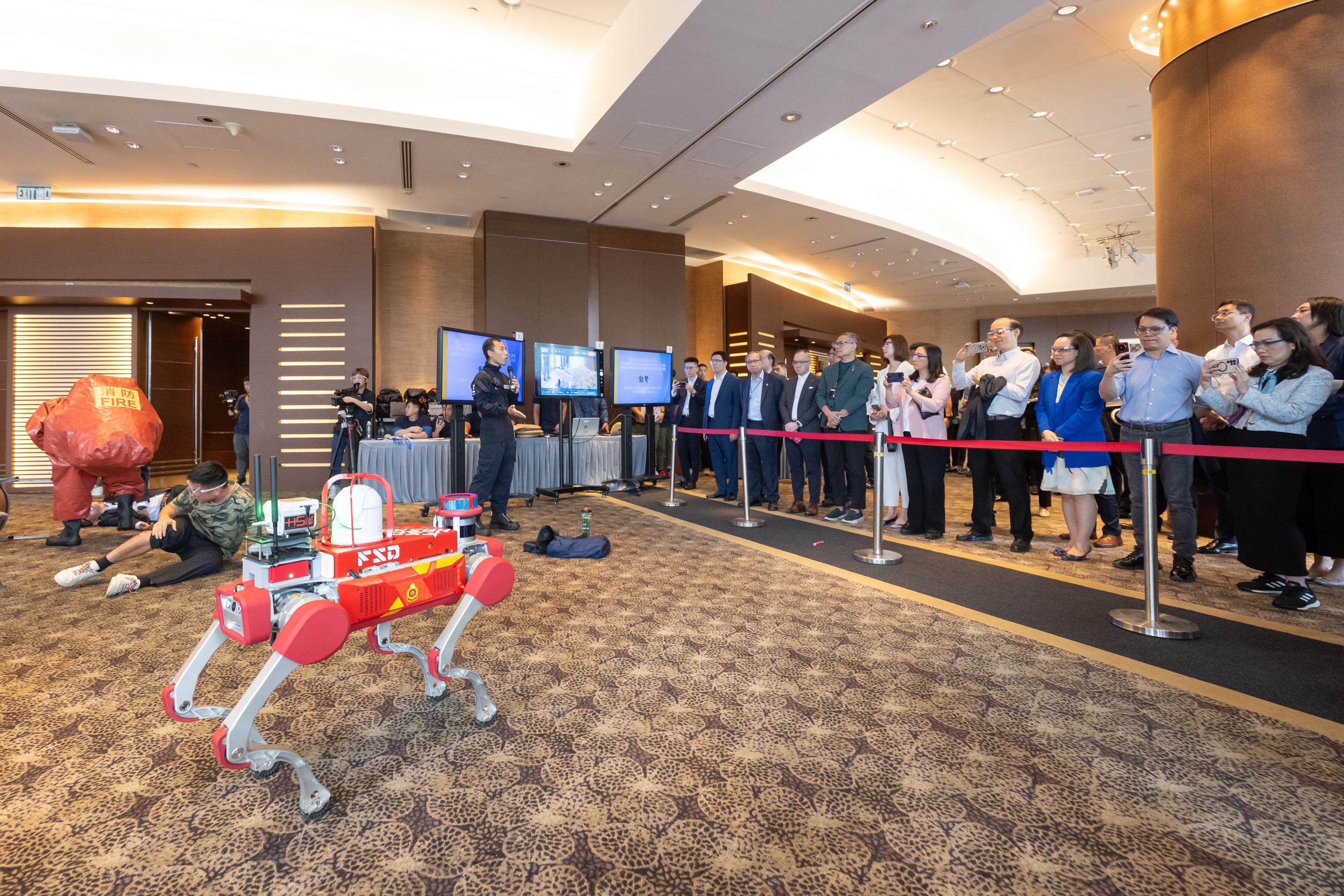The following is issued on behalf of the Legislative Council Secretariat:
​The Legislative Council Panel on Security observed the Inter-departmental Counter-terrorism Exercise, codenamed Arbalest, at the Hong Kong Convention and Exhibition Centre (HKCEC) today (June 24) to learn more about the work of the Security Bureau (SB) and its disciplined services in counter-terrorism.
The exercise simulated local terrorists launching an attack by activating a hazmat device during an international conference at Bauhinia Room in the HKCEC. A large number of participants were injured and contaminated by hazardous substances. The relevant Government departments took action and successfully unravelled the plot and handled the hazardous substances. Following a briefing by representatives of the Fire Services Department (FSD) and the Hong Kong Police Force (HKPF), Members observed the exercise accompanied by the Secretary for Security, Mr Tang Ping-keung.
During the exercise, HKPF's fully-armed Counter Terrorism Response Unit and the Explosive Ordnance Disposal Bureau sped to the scene to subdue the terrorists and handle the hazardous material agent respectively. The FSD then utilised a robotic dog and drones for search and aerial monitoring at the scene. It also mounted a rescue operation with the Civil Aid Service, the Auxiliary Medical Service and the Hospital Authority, carrying out mass decontamination for the injured and triaged them for treatment. The Government showcased the Fire Services Mobile Command Unit and Mobile Casualty Treatment Centre, as well as the HKPF's new mobile command station and operational tools during the exercise.
Members took the opportunity to exchange views with representatives of the Government regarding counter-terrorism and emergency response efforts of the SB and its disciplined services. They believed the exercise demonstrated the professionalism and excellent capabilities of various disciplined services in effectively and rapidly responding to unforeseen incidents in Hong Kong. The large-scale inter-departmental exercise, which is held twice a year on average, helps enhance the co-ordination and communication among different units.
Members noted that innovative technologies were widely adopted by the disciplined services during the exercise to enhance operational efficiency. These included the Patient Tagging System for Multiple Casualties Incidents equipped with a chip and a QR code on the triage cards, the Indoor Locating Equipment that monitored the movements of firefighters, and the Hazmat Robotic Dog that provided real-time imaging and data analysis of the environment. The latter two were introduced from the Mainland last year. Members suggested that the Government should allocate more resources to continue leveraging technology to enhance crisis management capabilities and ensure the safety of frontline personnel, so as to provide better protection to the lives of the people.
A total of 15 members and non-members of the Panel on Security participated in the visit.
Follow this news feed: East Asia








